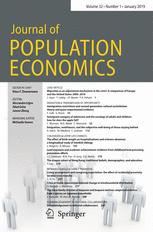Dowry is a common custom in South Asia with rising use and increasing amounts. The paper shows that a higher dowry amount, especially in terms of furniture, electronics, and kitchenware, is positively associated with women’s status in the marital household.
Read more in:
Momoe Makino: “Marriage, dowry, and women’s status in rural Punjab, Pakistan”
Journal of Population Economics, Vol. 32 (2019), Issue 3, pp. 769-797.
Journal Website. Download PDF of article for free – OPEN ACCESS
GLO Fellow Momoe Makino
Author Abstract: Dowry is a common custom observed in South Asian countries. Despite alleged negative consequences caused by dowry and the legal ban or restrictions on its practice, the custom has been extended, and recently, dowry amounts seem to be increasing. Compared with public interest in and theoretical studies on dowry, empirical studies are relatively scarce mainly due to data unavailability and inadequacy. We conducted a household survey specifically designed to empirically investigate how dowry is associated with women’s status in the marital household in rural Punjab, Pakistan. The dataset is unique because it gathers information on disaggregated marriage expenses, which enables us to examine the relation between each itemized component of dowry and women’s status. Results show that a higher dowry amount, especially in terms of furniture, electronics, and kitchenware, is positively associated with women’s status in the marital household. The positive association of these illiquid items adds suggestive evidence that in rural Punjab, Pakistan, dowry serves as a trousseau that the bride’s parents voluntarily offer to their daughter.

Ends;
